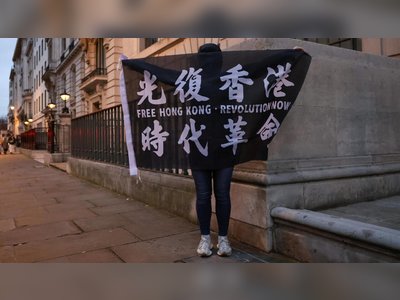California's CalExit Movement Gathers Momentum Amid Ongoing Political and Economic Discussions in the State.
A referendum on the secession of California is being prepared as state leaders highlight economic inequalities and political dissatisfaction.
California's CalExit initiative, spearheaded by activist Marcus Ruiz Owens, is making headway as state officials have greenlighted a plan to gather half a million signatures by July 22 as a preliminary step toward a referendum set for November 2028.
According to the proposed plan, if at least fifty percent of registered voters participate and fifty-five percent cast their votes in favor, it would be interpreted as a vote of no confidence in the federal government and a desire for autonomy.
Supporters of the initiative argue that California, boasting a gross domestic product of nearly four trillion dollars, pays more in federal taxes than it receives for infrastructure, disaster relief, education, and various federal programs.
They assert that this financial disparity has fueled increasing political dissatisfaction within the state.
Conversely, critics point out that secession would pose significant economic, legal, and logistical hurdles, including the forfeiture of federal support, the necessity to develop independent defense and trade policies, and complex constitutional challenges, as the U.S. Constitution lacks a clear process for unilateral secession.
The movement has garnered more media coverage in the wake of Donald Trump's election, highlighting a larger conversation about the dynamics between California and the federal government.
Recent surveys indicate that approximately twenty-nine percent of California residents support the notion of secession, though the ultimate outcome of any referendum remains uncertain.
According to the proposed plan, if at least fifty percent of registered voters participate and fifty-five percent cast their votes in favor, it would be interpreted as a vote of no confidence in the federal government and a desire for autonomy.
Supporters of the initiative argue that California, boasting a gross domestic product of nearly four trillion dollars, pays more in federal taxes than it receives for infrastructure, disaster relief, education, and various federal programs.
They assert that this financial disparity has fueled increasing political dissatisfaction within the state.
Conversely, critics point out that secession would pose significant economic, legal, and logistical hurdles, including the forfeiture of federal support, the necessity to develop independent defense and trade policies, and complex constitutional challenges, as the U.S. Constitution lacks a clear process for unilateral secession.
The movement has garnered more media coverage in the wake of Donald Trump's election, highlighting a larger conversation about the dynamics between California and the federal government.
Recent surveys indicate that approximately twenty-nine percent of California residents support the notion of secession, though the ultimate outcome of any referendum remains uncertain.










